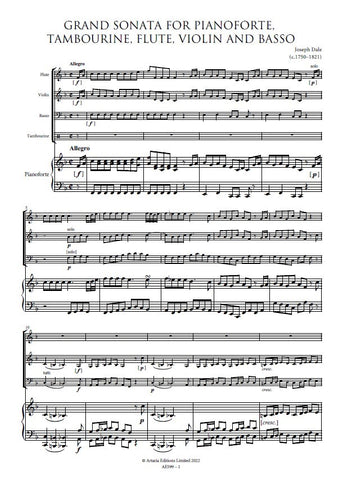Description |
Shield, William (1748-1829)
|
||||||||||||||
Details |
The London premires of Opp.1 and 2 probably took place at William Napier's morning concerts held at the Thatched House Tavern in St. James's Street. The performers at this venue were gentlemen amateurs backed with some professional assistance (possibly including Shield) and the audience consisted largely of nobility (but not ladies) on their way to court. Napier's concerts were more than a vehicle for airing newly published works or composers, and when it was proposed to revive the series in 1792, the Morning Chronicle of 28 January recalled that they had served to improve the "taste and science" of the amateur as well as introducing "professional merit" to the "highest patronage". Shield's duets, expressly written with talented amateurs in mind (according to the title-page of Op.2), exactly suited the repertoire of the morning concerts. Both sets of duets are neatly engineered with a violinist's grasp of technique and articultion, and with each part sharing in the musical interest. The prevailing spirit of Op. 1 is Italianate and there are many attractive details to be heard. The "amoroso" movement of No.1, for example, with its ardent episodes and the "hunting" rondo of No.2 which begins with the representation of distant horn calls and later depicts a chromatically wounded prey. If the opening of No. 3 gives the impression of an exotic dance, including the audible thrum of a guitar or harp, then the rondo of No.4 can be imagined as a spring song animated with birds and breezes. The opening of No.5 is as propulsive as a theatre overture whilst No.6, written for either violins or flutes, assumes a suitably fluty tone. Op.2 is an altogether more compact set which sharpens the focus on elements already noticed in Op.1. Shield employs a variety of forms including minuet, variations, rondo and canon; and he also adopts vocal styles including lyric song (for the "affettuoso" movement of No.1) and arioso (for the opening adagio of No.2). The first movement of No. 3 sounds like a mini stage overture whilst the adagio of No. 5 can be heard as a melting duet. Both movements of No. 4 adhere to folk style, incorporating hurdygurdy like figurations and simulated versions of the northern pipe-tunes which Shield himself so avidly collected. No autograph survives of Opp.1 and 2 and Napier's printed edition is the prime extant source. The printing history of the duets, with reissues of both sets by Bland and Weller (c.1818), and of Op.2 Nos.1, 2 & 6 by Charles Wheatstone (c.1815), testifies to their sustained popularity. Only set 2 survives of Bland and Weller's reprint but this fails to reproduce some tiny details of articulation present in Napier's original. Napier's sets, copies of which are preserved in the British Library, London, under the call number g.421.q.(4) for Op.1 and g.421.b.(1) for Op.2, are the source of this edition. The title-page for Op.1, framed with a decorative border of cherubs as heraldic trumpeters, reads: Six/DUETTOS/five for/two Violins/and one for two/GERMAN FLUTES/Composed by/W.SHIELD./Opera I./LONDON/printed for WILLM. NAPIER/No474/STRAND./ price 5s The title-page for Op.2, without a decorative border, reads: Six/DUETS/For two/Violins/Composed by/W.SHIELD./Opera 2d. /N.B. The Major part of the following Duets are Composed in an easy stile for the use of Scholars./[rule]/LONDON Printed for W M. NAPIER, No474 STRAND/Where may be had, Composed by the same Author/[two columns of titles]/With the greatest Variety of new Music . This edition presents as faithfully as possible the intentions of Napier's source. The style and notation of articulation and dynamic markings have been standardised throughout and, where missing, markings have been reconstructed from parallel passages. The notation of appoggiature has also been standardised to minimize confusion. Obvious wrong notes have been corrected without comment; editorial emendations with no authority from the source are placed within brackets. Robert Hoskins |
Loading...
Error














